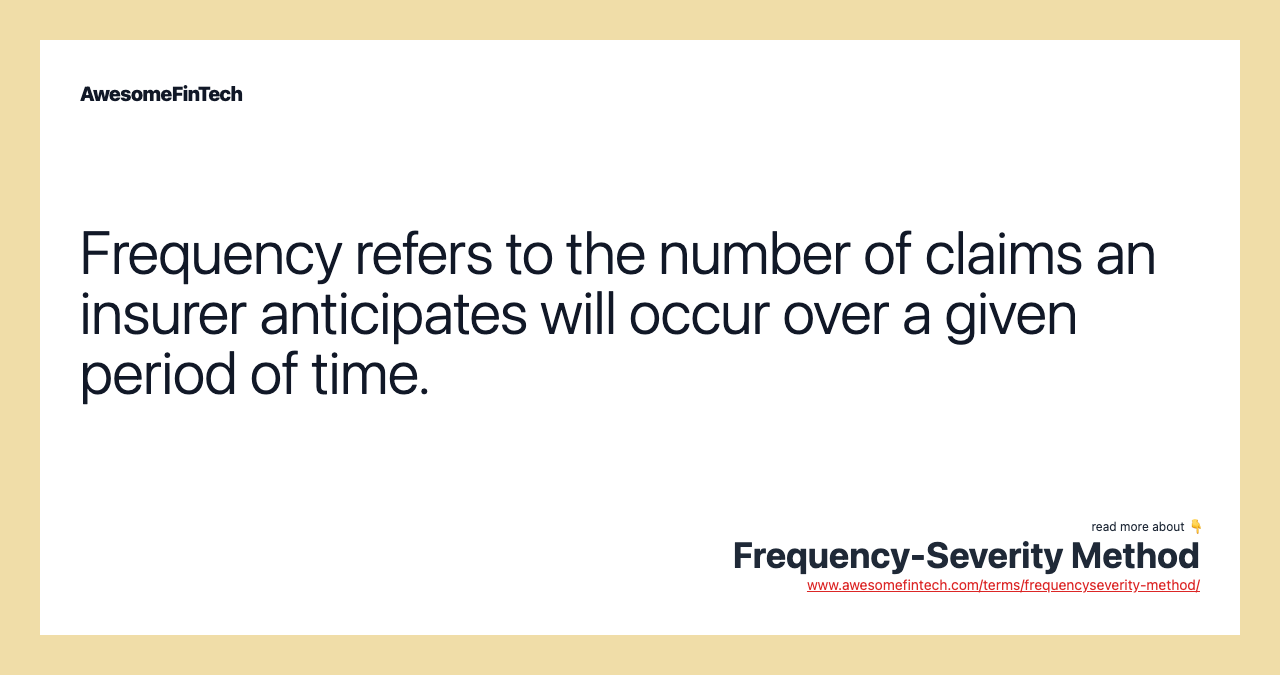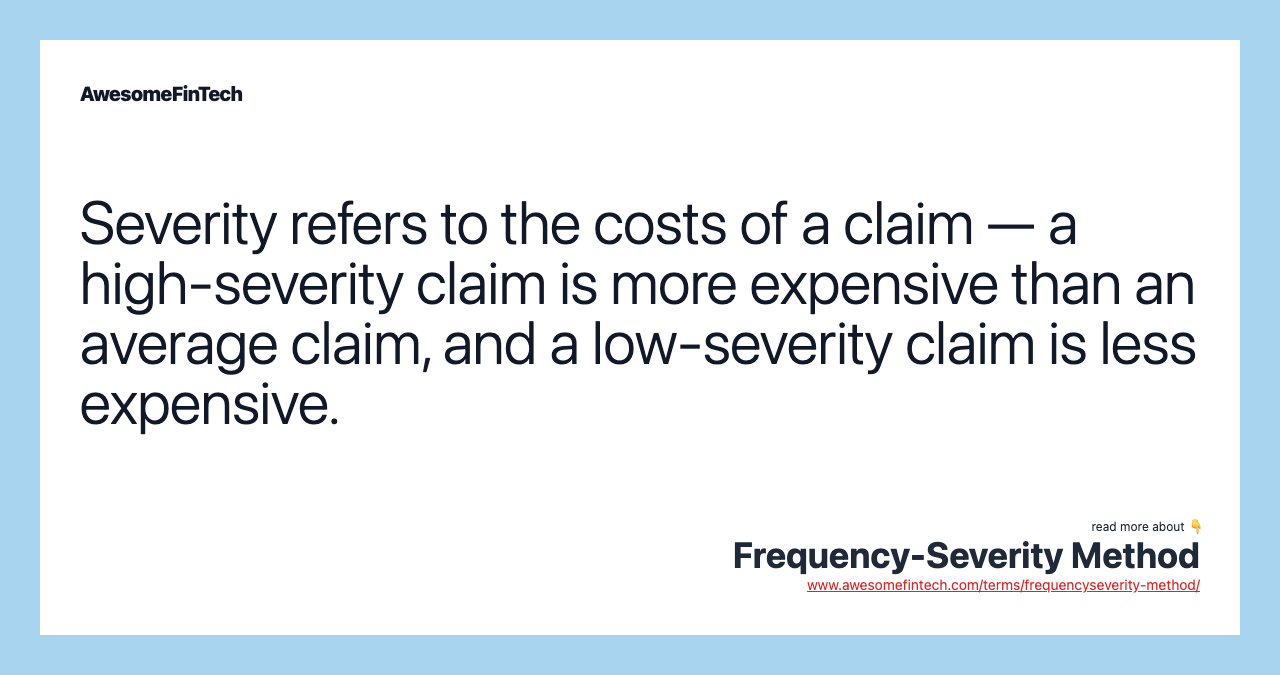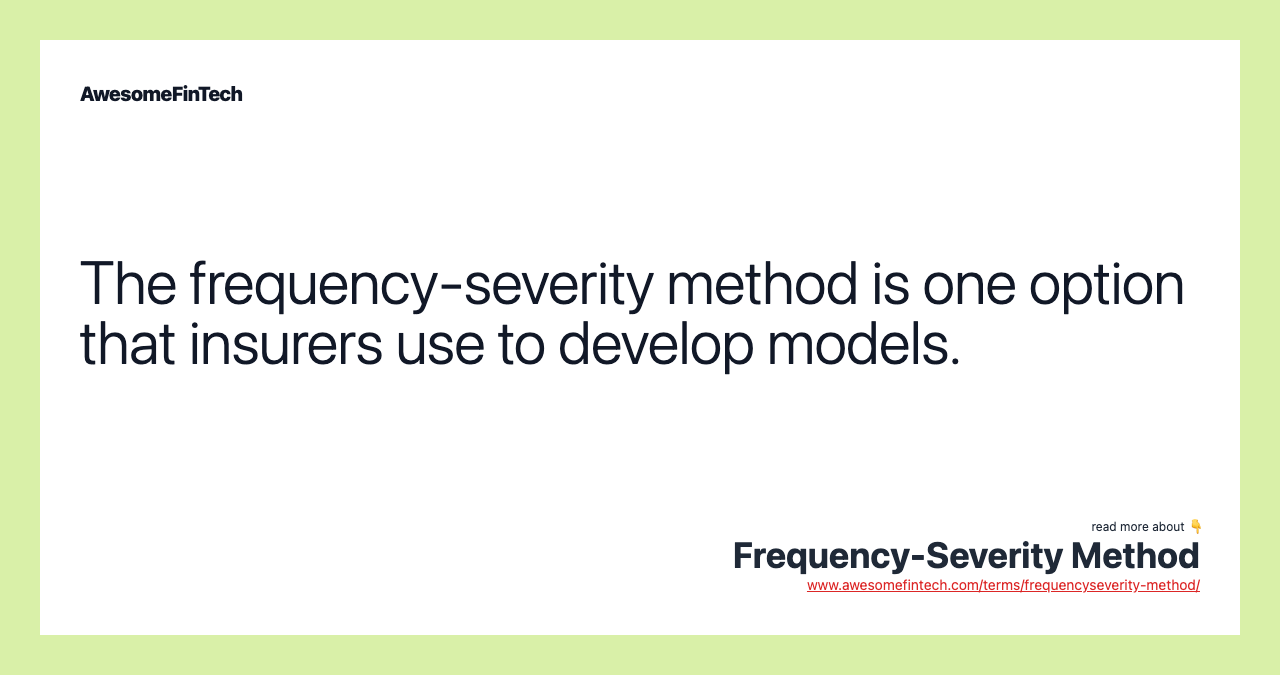Frequency-Severity Method
Frequency-severity method is an actuarial method for determining the expected number of claims that an insurer will receive during a given time period and how much the average claim will cost. The frequency-severity method is an actuarial method for determining the expected number of claims an insurer will receive during a time period and the average claim's cost. Frequency-severity method is an actuarial method for determining the expected number of claims that an insurer will receive during a given time period and how much the average claim will cost. A high-severity claim is more expensive than an average claim, and a low-severity claim is less expensive than the average claim. Severity refers to the costs of a claim — a high-severity claim is more expensive than an average claim, and a low-severity claim is less expensive.

What Is the Frequency-Severity Method?
Frequency-severity method is an actuarial method for determining the expected number of claims that an insurer will receive during a given time period and how much the average claim will cost.
Frequency-severity method uses historical data to estimate the average number of claims and the average cost of each claim. The method multiplies the average number of claims by the average cost of a claim.




Understanding the Frequency-Severity Method
In the frequency-severity method, frequency refers to the number of claims that an insurer anticipates will occur over a given period of time. If the frequency is high, it means that a large number of claims is expected to occur.
Severity refers to the cost of a claim. A high-severity claim is more expensive than an average claim, and a low-severity claim is less expensive than the average claim. Average costs of claims are estimated based on historical data.
For instance, consider a prospective home buyer considering the purchase of a beach house in Miami. This part of the Florida coast averages one hurricane per year. With the potential for complete destruction so high and so frequent, the frequency-severity method would indicate that an insurance company should avoid underwriting a policy for this beach house.
Frequency-Severity Method and Other Risk Models
Insurers use sophisticated models to determine the likelihood that they will have to pay out a claim. Ideally, the insurer would prefer receiving premiums for underwriting new insurance policies without ever having to pay out a claim, but this is a very unlikely scenario.
Instead, insurers develop estimates as to how many claims they may expect to see and how expensive the claims will be based on the types of policies they provide to policyholders. The frequency-severity method is one option that insurers use to develop models.
Frequency refers to the number of claims that an insurer expects to see. High frequency means that a large number of claims are expected to come in.
The average cost of claims may be estimated based on historical cost figures. Because the frequency-severity method looks at past years in determining average costs for future years it is less influenced by more volatile recent periods. This means that it is not reliant on loss development factors based on more recent years.
However, this also means that the method is slower to adapt to increases in volatility. For example, an insurer providing flood insurance will adapt more slowly to an increase in the severity or frequency of flood damage claims caused by recent rising water levels.
Related terms:
Accounting
Accounting is the process of recording, summarizing, analyzing, and reporting financial transactions of a business to oversight agencies, regulators, and the IRS. read more
Average Severity
Average severity is the amount of loss associated with an average insurance claim. read more
Bornhuetter-Ferguson Technique
The Bornhuetter-Ferguson technique is a method for calculating an estimate of an insurance company’s losses. read more
Exposure Rating
An exposure rating is used by reinsurers to calculate risk when they do not have enough historical data on a specific insured party. read more
Flood Insurance
Flood insurance is a type of property coverage that protects homeowners from water damage to the structure and/or contents of their property. read more
Ground-Up Loss
Ground-up loss is the total amount of loss covered by an insurance policy. It is an important number to know when choosing plans. read more
Historical Cost
A historical cost is a measure of value used in accounting in which an asset on the balance sheet is recorded at its original cost when acquired by the company. read more
Incidence Rate
The incidence rate describes the frequency of an event occurring over time. Read how incidence rates impact investors in pharmaceutical companies. read more
Loss Development
Loss development is the difference between the final losses recorded by an insurer and what the insurer originally recorded. read more
Predictive Analytics
Predictive analytics is the use of statistics and modeling techniques to determine future performance based on current and historical data. read more